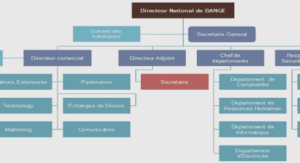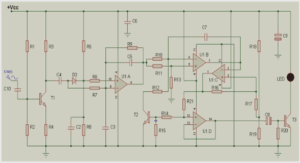Basic properties of the functional framework
Let be a bounded connected open set of R3 and its boundary. In this chapter, is supposed of class C 0;1 except in some cases where we will precise that the boundary can be more regular. Then a unit exterior normal vector to the boundary can be dened almost everywhere on @; it is denoted by n. The generic point in (or R3) is denoted by x = (x1; x2; x3). We denote by i, 0 i I, the connected components of , 0 being the boundary of the only unbounded connected component of R3n. Wex a smooth open set O with a connected boundary, such that is contained in O, and we denote by i, 1 i I, the connected components of On with boundary i (0 [ @O for i = 0). We do not assume that is simply-connected, but we suppose that there exists J connected, oriented and open surfacesj , 1 j J, called ‘cuts’, contained in , such that each surfacej is an open subset of a smooth manifold Mj , the boundary ofj is contained in for 1 j J, the intersectioni \j is empty for i 6= j, and the open set = n SJ j=1j is simply-connected and pseudo-Lipschitz (see [3]). For J = 1 with I = 3, see for example Figure 1.1. We need Sobolev spaces W s;p(i) on the connected component i, for 0 i I, 1 < p < 1 and for some real numbers s. We can also dene Sobolev spaces on the cuts W s;p(j) as restrictions toj of the distributions belonging to W s;p(Mj). We will denote by W s;p(j)0 the dual space of W s;p(j). Finally, []j denote the jump of a function overj , for 1 j J and h;iX;X0 denotes the duality pairing between a space X and X0. Using the derivation in the distribution sense, we can dene the operators curl and div on Lp() for 1 p 1. Indeed, let h; i denote the duality pairing between D() and its dual space D0(). For any function v = (v1; v2; v3) in Lp(), we have 8′ = (‘1; ‘2; ‘3) 2 D(), hcurl v;’i = Z v curl’dx = Z v1(@’3 @x2 @’2 @x3 ) + v2(@’1 @x3 @’3 @x1 ) + v3(@’2 @x1 @’1 @x2 ) dx; 8’ 2 D(); hdiv v; ‘i = Z v grad ‘ dx = Z v1 @’ @x1 + v2 @’ @x2 + v3 @’ @x3 dx: We note that the vector-valued Laplace operator of a vectoreld v = (v1; v2; v3) is equivalently dened byv = grad (div v) curl curl v (1.1) or byv = (v1;v2;v3): For any function q in W 1;p(), grad q can be extended to Lp(). We denote this extension by ]grad q. In the sequel, the letter C denotes a constant that is not necessarily the same at its various occurrences and p denotes unless it is explicitely mentioned, a real number such that 1 < p < 1. This leads to the following denitions.
Denition
For 1 p < 1, the space Hp(curl; ) is dened by Hp(curl; ) = fv 2 Lp(); curl v 2 Lp()g ; (1.2) and is provided with the norm: kvkHp(curl;) = kvkp Lp() + kcurl vkp Lp()1 p : The space Hp(div; ) is dened by Hp(div; ) = fv 2 Lp(); div v 2 Lp()g ; (1.3) and is provided with the norm kvkHp(div;) = kvkp Lp() + kdiv vkp Lp()1 p : Finally, we set Xp() = Hp(curl; ) \ Hp(div; ): (1.4) It is provided with the norm Xp() = kvkp Lp() + kdiv vkp Lp() + kcurl vkp Lp()1 p : These denitions will also be used with replaced by R3. Let usrstly give an adaptation of a basic result which can be found in [39] and [52]. Proposition 1.0.2. The space D() of the restrictions to of functions of D(R3) is dense both in Hp(div; ) and in Hp(curl; ), for 1 p < 1. Proof. We give the proof of the density in H p(curl; ) and the proof for the space H p(div; ) is very similar. Let u be some element of H p(curl; ). We have to prove that u is a limit in H p(curl; ) of vector functions of D(). 1. Assume for the moment that is strictly star-shaped with respect to one of its points, after translation in R3, we can suppose this point is 0. This amounts to say that ; 80 < 1 and; 8 > 1: Here, we take > 1 and we set =. For a function ‘ dened on , we set: 8x 2; ‘(x) = ‘(x ):
Which we extend to distribution, T 2 D0() ! T 2 D0() by: hT; ‘i =3hT; ‘1 i; ‘ 2 D() The distribution T belongs then to D0(). It is easy to check that: 8T 2 D0(); curl (T) = 1 (curl T); : Due to ([52], Chapter 1, Lemma 1.1), the restriction to of the function u, > 1, converge to u in H p(curl; ) as 7! 1. Let ‘ 2 D() and ‘ = 1 on . the function ‘u extended by 0 outside clearly belongs to H p(curl; R3) and has compact support. The result is then proved by regularization. Let 2 D(R3), be a smooth C1 function with compact support, such that 0, R R3(x) dx = 1. For » 2 (0; 1), let » denote the function x 7! ( 1 « 3 )( x » ). As » ! 0, » converges in the distribution sence to the Dirac distribution and it is a classical result that for any in H p(curl; R3) » ! inH p(curl; R3); : (1.6) As a consequence, » f’u belongs to D(R3) since this function has a compact support (supp( » f’u) (supp ») + (suppf’u)) and components which are C1. Moreover, lim « !0″ f’u = f’u in H p(curl; R3): We note: ! = the restriction of the functions f’u to : Hence u is the limit in H p(curl; ) of the functions »! as 7! 1. the result follows since » ! belongs to D(). 2. In the general case, we use the following property (cf. for exemple Bernardi [14]). A bounded, Lipschitz-continuous open set is the union of anite number of star-shaped, Lipschitz-continuous open sets. Clearly, it suces to apply the above argument to each of these sets to derive the desired result on the entire domain. Indeed the sets , (j)j2J form an open covering of . Let us consider a partition of unity subordinated to the coveringj \ : 1 = ‘ + X j2J ‘j ; where ‘ 2 D(); ‘j 2 D(j \ ): We may write u = ‘u + X j2J ‘ju:
Since the function ‘u has compact support in it can be shown as in (a) that ‘u is the limit in H p(curl; ) of functions belonging to D() (function ‘u extended by 0 outside belongs to H p(curl; R3) and for » suciently small, » ‘u has compact support in ). Let us consider now one of the function uj = ‘ju. Let, 6= 0, be the linear transformation x !x. The set0j =j \ is star-shaped with respect to one of its points y, by taking y as origin, it is clear that :0j0j0j for > 1;0j0j0j for 0 < < 1 Let denote the function x 7!((x)) then, the restriction to0j of the function uj, > 1, converges to uj in H p(curl;0j ) as ! 1 (cf. [52], Lemma1:1 p 7). But if j 2 D((0j )) and j = 1 on0j , the function j( uj) clearly belongs to H p(curl; R3) (the function j( uj) extended by 0 outside0j). Take wj = j( uj). Since this function belongs to H p(curl; R3) and has a compact support, by regularization, the function wj belongs to D(R3). Moreover, . lim « !0″ wj = wj in H p(curl; R3): Since the restriction to0j of the function » wj converges to the restriction of the functionuj to0j , it can be shown that uj is is the limit in H p(curl;0j ) of functions belongings to D(0 j), as ! 1. . Remark 1.0.3. Note that the previou proof for the space Hp(curl; ) is general and does not use the particular structure of the dierential system curl, and we can use the same proof for the space Hp(div; ). We can easily derive by the same arguments that The space D() is also dense in Xp(). As proven in Reference [39], chapter I, section 2 for the Hilbertian case, these properties of density allow for dening tangential or normal traces for the functions of these spaces. More precisely, any function v in H p(curl; ) has a tangential trace v n in W 1 p ;p(), dened by 8′ 2W 1;p(); hv n;’i = Z v curl’dx Z curl v ‘dx; (1.7) where the symbol h;i denotes the duality pairing between W 1 p ;p() and W 1 1 p0 ;p0(): Any function v in H p(div; ) has a normal trace v n in W 1 p ;p(), dened by 8’ 2 W 1;p(); hv n; ‘i = Z v grad ‘ dx + Z (div v)’ dx:
Introduction |





